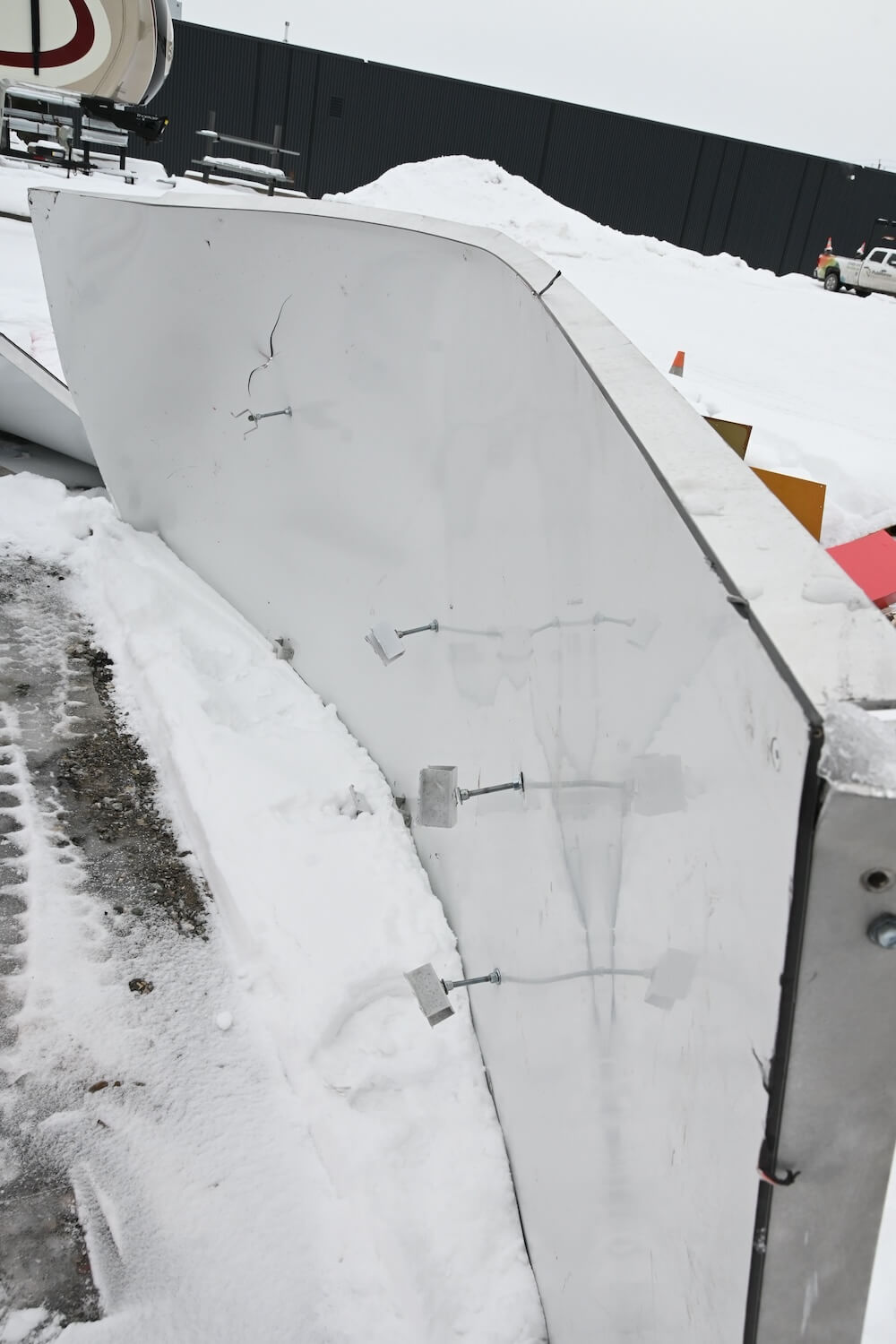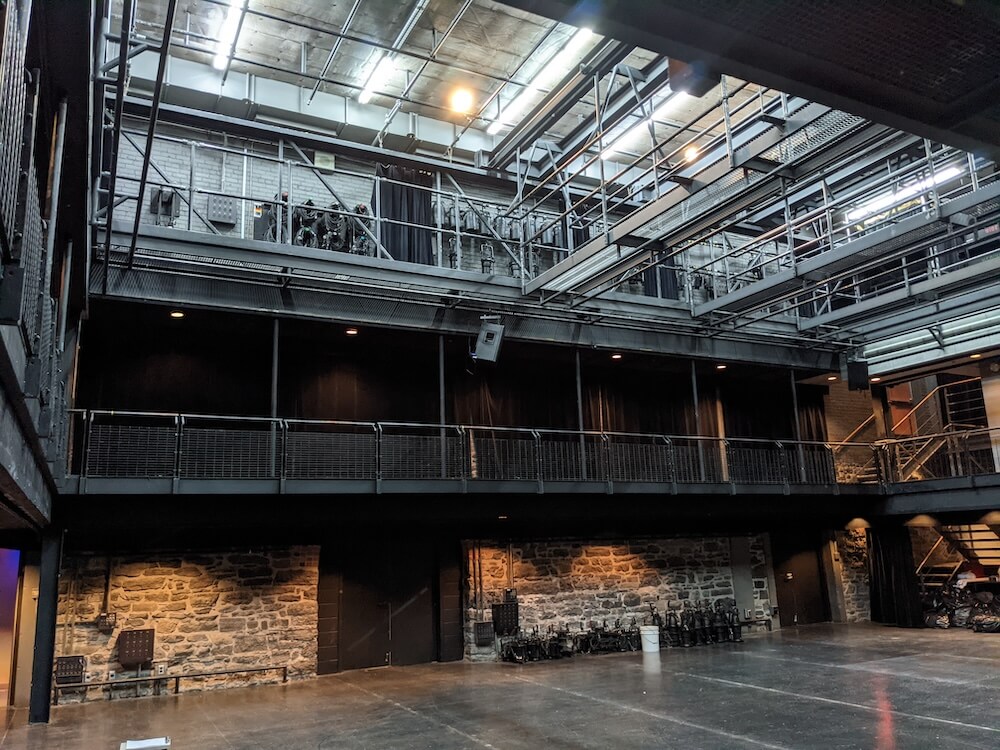Structural Investigations for Unconventional structures
By Nicolas Pelletier, P.Eng.
When it comes to a building, it may be easy to find a structural expert, but what about structures other than buildings? Where are the experts in this field?
Issues can arise with structures that, at first glance, are not considered “standard.” Did you know, for example, that temporary structures, like scaffolding, company signs, power pylons, traffic light poles, and tents, are more susceptible to damage caused by wind, snow loads, ice, or even water accumulation? The following are some examples of how we tackle today’s challenges, with respect to the climate.
Damage Caused by The Elements
Let us consider the example of a pole used to support heavy equipment that falls due to wind. In such a case, an analysis through calculations could confirm that, given the dimensions of the base (e.g., a steel plate) and the height of the structure in question, a counterweight that had been placed at the base of the pole (e.g., concrete) was not sufficient to support a design wind load (reference of a 10-year return period), as prescribed by the National Building Code of Canada.
Indeed, the taller the pole, the more important the counterweight and/or the larger the base plate needs to be to increase the stabilizing moment[1]. This data is obtained by multiplying the equipment’s self-weight by the distance between the equipment’s centre of gravity and the tipping point. Comparing the stabilizing moment with the overturning moment, which is generated by the wind load, makes it possible to determine whether a structure is deemed stable or not.
It is also important to understand that several factors must be considered when calculating a wind load. The following table lists the main elements to consider.
- Exposure Coefficient:The wind load will be higher if the installation is on the edge of a lake, compared to if it is surrounded by buildings that block the wind.
- Gust Coefficient: Depending on the structural element, under study, gusts can influence the wind load differently.
- Drag Coefficient: This coefficient takes into account the geometry of the structure. For example, a signboard, like a speed limit sign, will undergo a greater wind load than a streetlight pole, which has rounded surfaces.
For example, as shown in Figure 1, an incident occurred when an outdoor sign of a large company had been torn off by the wind. In this case, the tearing of the structure was caused by a failure of the anchors to the building.
A weakness in these anchors could have resulted from improper design or installation of the sign, meaning that these parts may have been undersized, had not been designed by an engineer, or the number of screws used during installation may not have been sufficient.

Figure 1
Outdoor sign torn off by the wind
Damage Caused by Unknown Load Capacity
In other cases, insufficient load capacities can exacerbate failure, leading to the catastrophic loss of a structure. Therefore, consultation of a structural engineer is necessary to determine the structure’s load capacity. Knowing whether an object is able to withstand a certain weight load is crucial to prevent damage. For example, structures such as access ramps, for trucks at a port (Figure 2), or even a rigging structure for stage equipment in a theater (Figure 3), will have had the expertise of an engineer’s opinion, calculation, and guidance in the final product.

Figure 3
Access ramp for trucks

Figure 4
Rigging structure for stage equipment in a theater
In these cases, in order to determine the structural capacities, an engineer will visit the site to survey all of the structural elements, i.e., measure each element and its geometry, before performing resistance calculations. These calculations can be done manually, when dealing with simple configurations, but we also use digital structural analysis software, which allows us to obtain results more quickly. Most of the time, these structures are made of steel, but we are also capable of conducting these analyses on aluminum and wood structures (as well as other materials).
Significant Costs, But Also Public Safety Risks
In addition to the very high cost of repairing or replacing a failed structure, the failure to construct safe and durable structures can put public safety at risk. Therefore, it is crucial to understand the exact cause of a failure in order to improve the future design of a similar structure and/or to properly identify what repairs need to be made.
Sometimes people are injured during a structural failure, or when using a structure beyond its allowable limits; these incidents often occur because these limits are not known by the users. Not only can failure lead to costly civil liability claims and lengthy legal actions, but it can also lead to major bodily harm, including death.
Where to Find An Expert
CEP Forensic is available to meticulously inspect structures of all kinds; whether you require an investigation to determine the cause of a loss, or an inspection to certify the compliance of your equipment, you can always rely on our civil engineering experts.
[1] A bending moment (or moment) is the reaction imparted on a structural member due to a force resulting from a live load (climatic or use / occupancy load) and / or dead load (weight of materials), which causes the member to bend.
